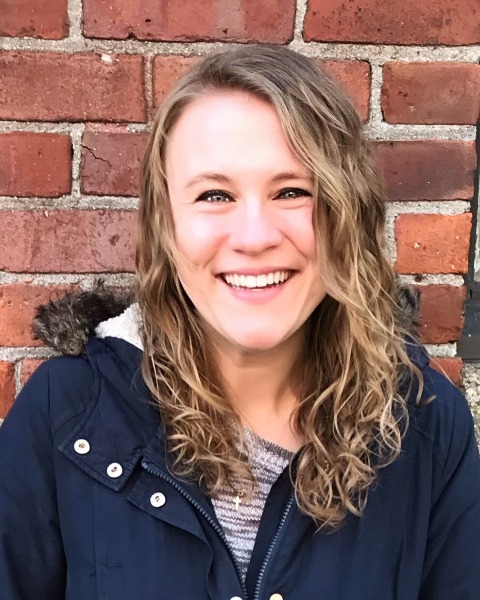Adult- Health Psychology / Behavioral Medicine
Symposium 68 - Adapting Exercise Interventions to Increase Community Engagement, Engage Vulnerable Populations, and Utilize Innovative Assessment Methods
Level of Familiarity: Basic to moderate
Recommended Readings: El Masri, A., Kolt, G. S., & George, E. S. (2022). Physical activity interventions among culturally and linguistically diverse populations: a systematic review. Ethnicity & Health, 27(1), 40-60.,
Stasi, S., Spengler, J., Maddock, J., McKyer, L., & Clark, H. (2019). Increasing access to physical activity within low income and diverse communities: a systematic review. American Journal of Health Promotion, 33(6), 933-940.
,Ginis, K. A. M., Nigg, C. R., & Smith, A. L. (2013). Peer-delivered physical activity interventions: an overlooked opportunity for physical activity promotion. Translational behavioral medicine, 3(4), 434-443.
, ,-

Kristin Szuhany, Ph.D. (she/her/hers)
Assistant Professor
New York University School of Medicine
New York, New York, United States -

Jasper Smits, Ph.D. (he/him/his)
Professor
University of Texas at Austin
Austin, Texas, United States -

Rachel Walsh, M.A. (she/her/hers)
Graduate Student
Temple University
Philadelphia, Pennsylvania, United States -

Louisa Sylvia, Ph.D. (she/her/hers)
Associate Professor
Massachusetts General Hospital (MGH)
Boston, Massachusetts, United States -
AA
Ana Abrantes, Ph.D.
Professor
Butler Hospital/Alpert Medical School of Brown University
Providence, Rhode Island, United States -

Kristin Szuhany, Ph.D. (she/her/hers)
Assistant Professor
New York University School of Medicine
New York, New York, United States
Chair(s)
Discussant(s)
Presenter(s)
Though there are several efficacious interventions for mood, anxiety, and substance use disorders, including cognitive behavior therapy (CBT) and pharmacotherapy, as many as 43% of individuals do not respond or only partially respond to these treatments (e.g., Barlow et al., 2000). Further, more than half (59%) of those with a psychiatric diagnosis do not receive treatment and a minority (14%) receive adequate care (Wang et al., 2005). Oft-cited barriers include stigma, lack of access to specialized care, and cost (Goetter et al., 2018). Exercise can improve both physical and mental health (e.g., depression, anxiety, bipolar disorder, substance use; Ashdown-Franks et al., 2020) without many of the side effects, accessibility issues, or costs of CBT or medication.
Despite the benefits, only 23% of US adults meet weekly exercise recommendations (Blackwell & Clarke, 2018) with evidence that older adults and those with psychiatric and chronic medical conditions engage in even less exercise (Harvey et al., 2013; Helgadottir et al., 2015). Therefore, it is of great importance to identify strategies to increase engagement, including novel intervention and assessment strategies, adaptations of existing interventions for diverse groups, and community partnerships. Indeed, research suggests that peer-facilitated interventions (Ginis et al., 2013); engaging community partnerships (e.g., churches, parks, recreation centers; Springer et al., 2022); and cultural adaptations, including culturally-relevant intervention material (El Masri et al., 2022) improve exercise program engagement. However, few studies have examined these strategies in individuals with psychiatric conditions, who may be at higher risk for lack of exercise and poorer physical and mental health.
This symposium highlights innovative assessment and intervention strategies to better understand and promote exercise engagement and mental health in diverse community samples. Our first presentation shows how intensive assessment using ecological momentary assessment and wearable devices can shed light on relationships between mood and physical activity in a racially and ethnicity diverse community sample at varying risk levels for bipolar spectrum disorders. Our second talk discusses barriers and facilitators of beginning community partnerships to increase physical activity among ethnoracially minoritized older adults, a sample at risk for lack of exercise engagement and physical and mental health challenges. The third talk presents a peer-facilitated exercise intervention delivered in the community for individuals in methadone maintenance treatment and highlights key considerations for in-person vs. virtual delivery methods. Our final presentation discusses considerations for adapting exercise interventions, specifically for minoritized populations with anxiety and depression symptoms and medical comorbidities, and feasibility of implementing brief, group interventions in hospital settings.
Our discussant, with extensive experience implementing exercise interventions in community settings, will summarize findings and discuss core priorities for future research and implementation efforts. Audience participation is encouraged.
Learning Objectives:
- Explain how innovative intensive assessment and wearable data can inform relationship between mood and exercise & key intervention targets
- Identify strategies for engaging community partnerships to promote physical activity in diverse patient populations
- Describe ways to engage peers in intervention delivery and community champions in dissemination efforts
- Consider strategies for adapting existing interventions to increase relevance and engagement among diverse community samples
- Consider prescribing exercise in clinical practice and identify ways to personalize intervention delivery
Presentations:
-
8:30 AM - 10:00 AM EST(SYM 68) Physical Activity and Mood Symptoms: Bidirectional Associations Among Individuals Diagnosed and At-risk for Bipolar Spectrum Disorders
Speaker: Rachel Walsh, M.A. (she/her/hers) – Temple University
Co-author: Logan T. Smith, M.A. – Temple University
Co-author: Joshua Klugman, PhD (he/him/his) – Temple University
Co-author: Madison Titone, Phd (she/her/hers) – UCSD
Co-author: Tommy Ng, PhD (he/him/his) – Weill Cornell
Co-author: Namni Goel, Ph.D. – Rush University Medical Center
Co-author: Lauren Alloy, Ph.D. (she/her/hers) – Temple University
-
8:30 AM - 10:00 AM EST(SYM 68) Strategies for Recruitment and Engagement of Ethnoracially Minoritized Communities of Older Adults
Speaker: Louisa Sylvia, Ph.D. (she/her/hers) – Massachusetts General Hospital (MGH)
Co-author: Sofia Montinola, B.A. – Massachusetts General Hospital
Co-author: Antonietta Alvarez-Hernandez, BA – Massachusetts General Hospital (MGH)
Co-author: Maria Villalona, BA – Massachusetts General Hospital (MGH)
Co-author: Ana-Maria Vranceanu, Ph.D. – Massachusetts General Hospital
-
8:30 AM - 10:00 AM EST(SYM 68) Peer-facilitated Physical Activity Delivered In-person versus Virtually in Patients with Opioid Use Disorder in Methane Maintenance Treatment
Speaker: Ana Abrantes, Ph.D. – Butler Hospital/Alpert Medical School of Brown University
Co-author: Genie Bailey, M.D. (she/her/hers) – SSTAR
Co-author: Matthew Buman, Ph.D. (he/him/his) – Arizona State University
Co-author: Lisa Uebelacker, Ph.D. (she/her/hers) – Butler Hospital/Alpert Medical School of Brown University
Co-author: Michael Stein, M.D. (he/him/his) – Boston University
-
8:30 AM - 10:00 AM EST(SYM 68) Exercise for Mood: Cultural Adaptations of a Group Exercise Intervention for an Urban and Diverse Community Outpatient Setting
Speaker: Kristin L. Szuhany, Ph.D. (she/her/hers) – New York University School of Medicine
Co-author: Molly J. Schadegg, Ph.D. – NYU School of Medicine
Co-author: Laurie Gallo, PhD – Montefiore Medical Center
Co-author: Ana Ozdoba, MD – Montefiore Medical Center

.png)
